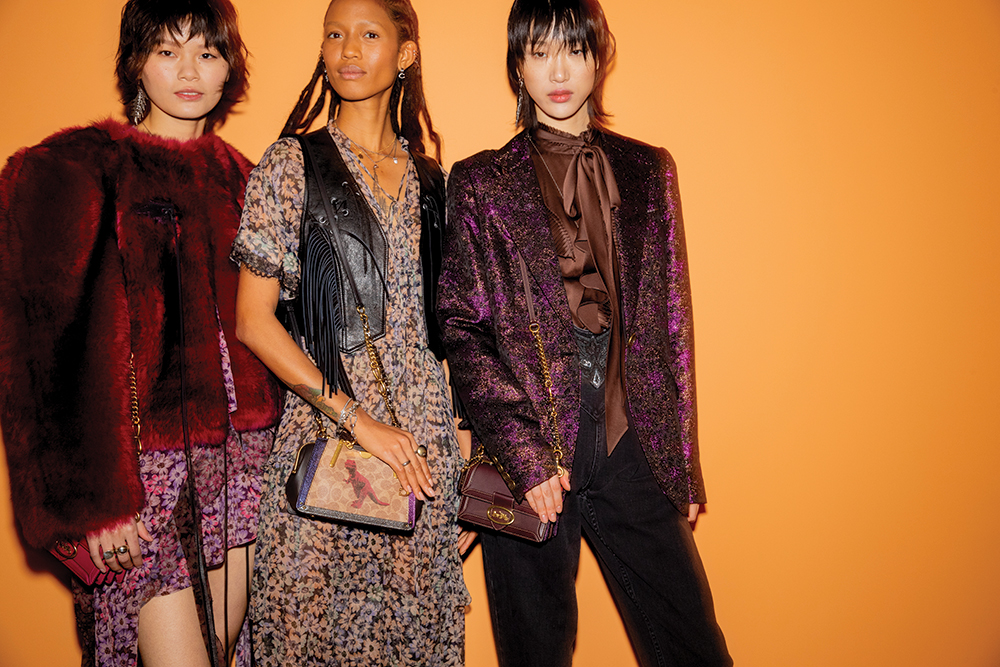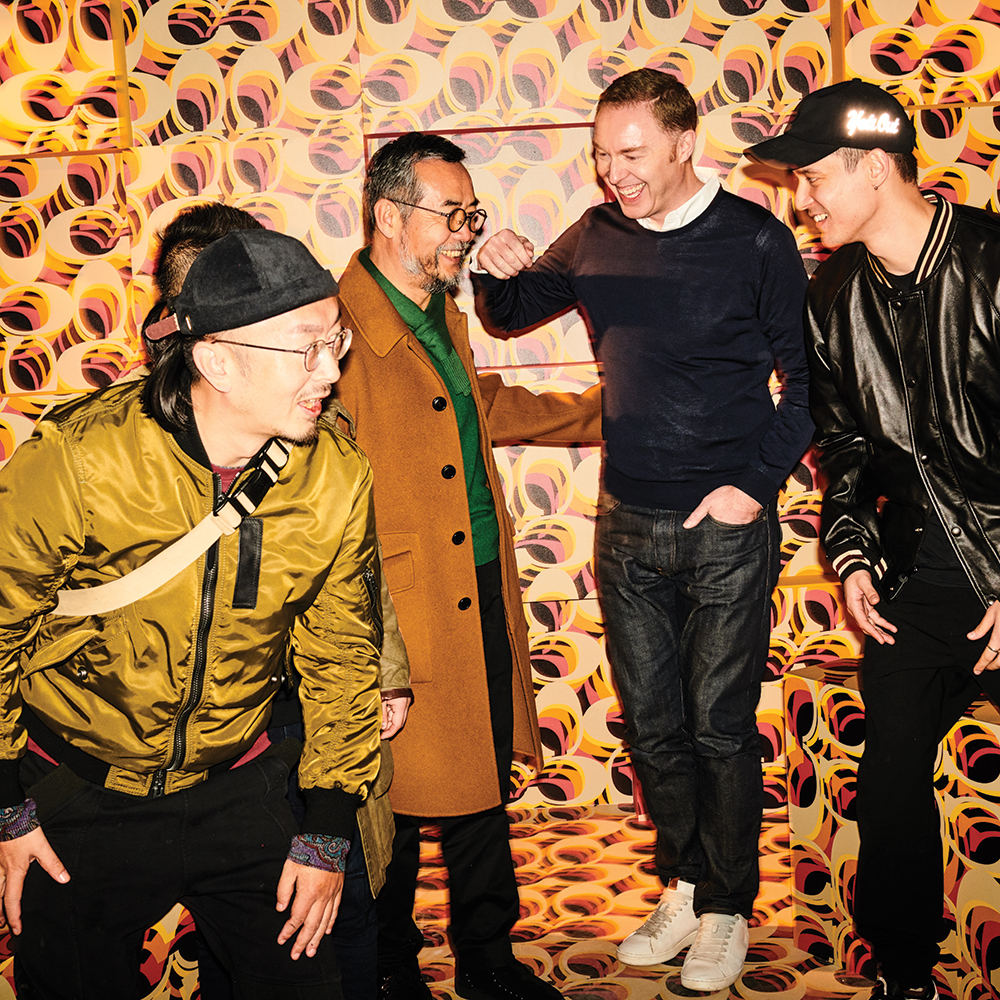Expectations were high when Coach announced it would be showing its Pre-Fall 2019 collection in China. Filling the iconic West Bund Art Center, the American brand paid homage to its home base, New York City, as well as Shanghai, showcasing the vibrant energy both global cities share. Set against neon lights and classic cars, Coach presented a collection that featured signature floral prints and leather details, glam-rock platform shoes, and collaborations with local artists who reimagined the brand’s beloved mascot, Rexy. Here, Coach creative director Stuart Vevers sheds light on the milestone show, the inspiration behind the collection, and the importance of authenticity.

This is Coach’s 15th year in China, what made you decide to have the first runway show in Shanghai?
It’s a cool city, and it feels like a fashion city to me as well. China is
a major market for Coach, and it was a way for us to really show that it is important and symbolic for our teams and clients.
What inspired the Pre-Fall 2019 collection?
A big driving force for the collection was the collaborations with Chinese creators Sui Jianguo, Yeti Out, Zhu Jingyi, and Guang Yu. When I vistited Shanghai, I was blown away by the contemporary art scene, the curation, the architecture of the galleries, and the reclaimed industrial buildings. I loved the idea of a collective and a group of individuals that came from different backgrounds, with different styles, but the thing that tied them all together was Rexy, the Coach dino. I invited them all to reinterpret Rexy in their own signature style. We had consistent Coach references, like the lightweight shearling and the nostalgic floral dresses, but everything was more graphic—we played with proportion and shapes. There was also a lot of glam rock in there—I like that kind of rock and roll attitude, but I love glam rock because it has an exuberance to it. The set design was about the nostalgic view of New York that comes from the movies I watched as a kid. Taxi Driver was a specific reference—that grit and attitude of New York, but then with this surreal filter over it, almost like a piece of work by Thomas Demand. All the elements were authentic to New York, but they were all in the wrong colour.

How did the collaborations with the artists come about?
When I spent time in Shanghai, a lot of people talked to me about Rexy— she’s really resonated in China. I then had to find the work of people who I connected with personally and also felt could interpret Rexy in an interesting way. It became a lot of googling and a lot of asking questions from the local team or friends I have in China. I picked Angelica Cheung’s brain for ideas because I knew I wanted people with different styles. What was amazing was that all the people we reached out to said yes, so that was super exciting. Some of the artists are more established and well-known, but there are also some newer creatives in there—I like the idea of giving people a platform to show their work; that was also important to me.
Was the casting process different in Shanghai?
For casting, we flew in my favourite Coach guys and girls—Lexi Boling, Adesuwa Aighewi, and Sora Choi—but we deliberately left space to cast local models when we arrived. I didn’t expect it to have as strong of an impact on the show as it did, but we met amazing new faces who have such incredible personal style. When they arrived looking so amazing in their own clothes for the casting, we ended up having about 10 models casted locally, with the two opening looks on local models. It felt more authentic to us showing in Shanghai and being connected to the place where we were showing. Immediately after the show, I said to our casting director, Ashley, “We need to get some of these guys over to New York in February.” It’s our fourth collection showing womenswear and menswear together, and I really enjoy that there are a few pieces that go between the men’s and women’s styling. It’s an interesting and modern way to approach styling—it’s how people dress now.

You’ve been with Coach about five years now. How has that experience been for you, and what does it mean to be working with the brand?
It’s amazing—I’m proud of what we’ve achieved. We’ve created a strong, identifiable look for our guy and girl. We’ve introduced ready-to-wear in fashion for the first time in a brand that has a 77-year history—that’s something I feel proud of, and something we’ve done in a meaningful and believable way. Aside from a beautiful glove-tanned leather or signature print bag, Coach is now also known for great shearling coats, nostalgic floral dresses, biker jackets, and playful sweaters. As a designer, that gives me a real sense of achievement, because I’ve created something brand new for a storied house.
Photo courtesy of Coach

